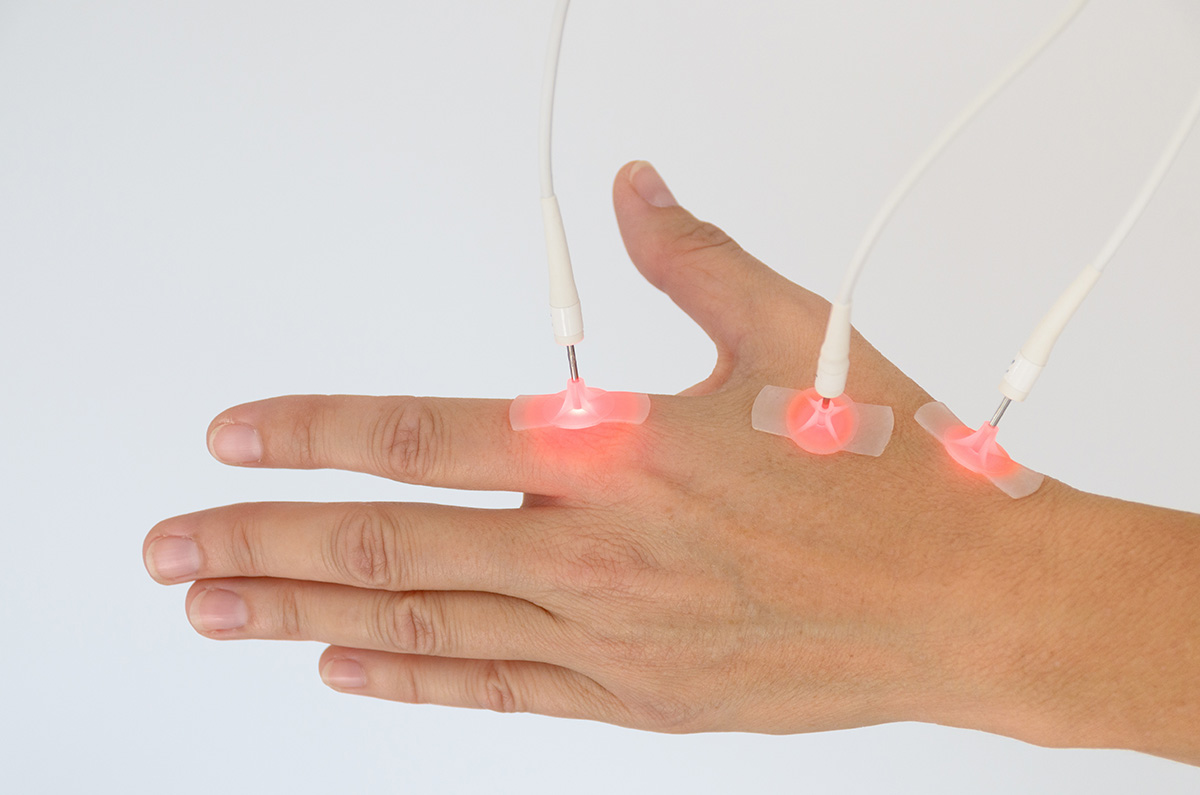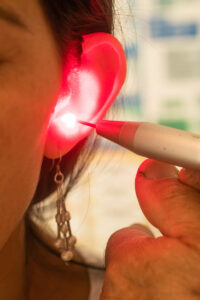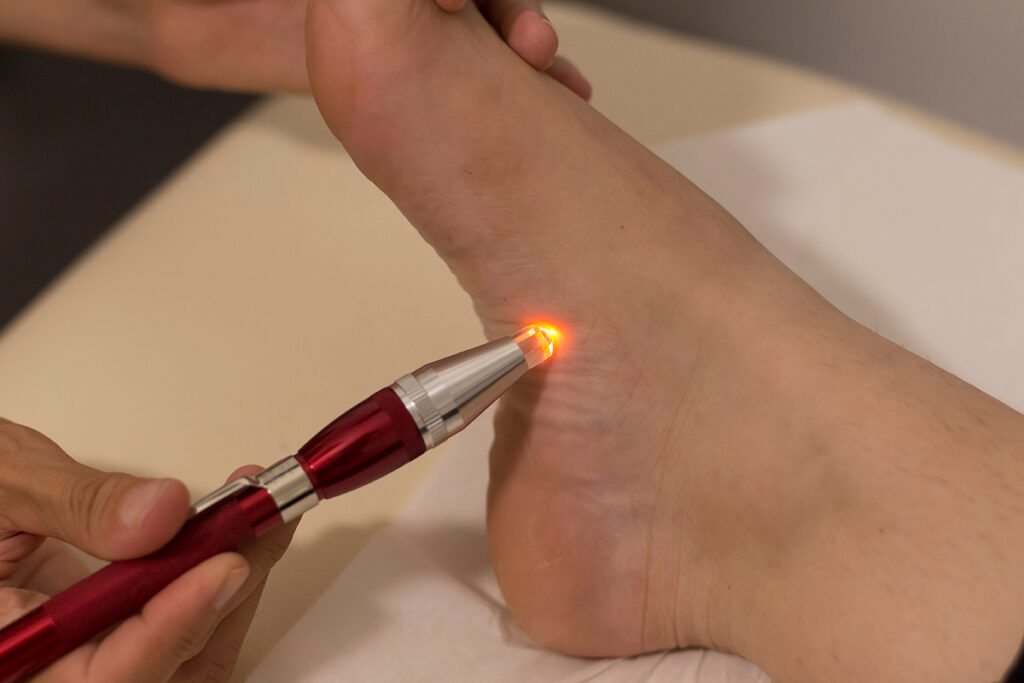
For thousands of years, acupuncture has been a cornerstone of Traditional Chinese Medicine (TCM), using fine needles to stimulate specific points on the body to restore balance, relieve pain, and improve overall well-being. In recent decades, technological advancements have introduced a modern variation known as acupuncture laser therapy (also called laser acupuncture). Instead of inserting needles, this therapy uses low-level laser beams to stimulate acupuncture points.
Laser acupuncture has quickly gained recognition in integrative medicine because it combines the wisdom of acupuncture with the safety and precision of laser technology. This non-invasive approach appeals to those who may be hesitant about needles, while still delivering therapeutic benefits comparable to or even surpassing traditional acupuncture.
In this article, we will explore the fundamentals of acupuncture laser therapy, how it works, its scientifically supported benefits, and its applications across various health conditions. We will also examine its safety profile and potential future role in healthcare.
What is Acupuncture Laser Therapy?
Acupuncture laser therapy uses low-level laser therapy (LLLT), also known as cold laser therapy, to stimulate acupuncture points traditionally accessed with needles. The lasers used are non-thermal, meaning they do not cut or burn tissue but instead deliver gentle, targeted light energy at specific wavelengths.
How it Works
- Targeting acupuncture points: The practitioner directs a low-intensity laser beam onto the skin at precise acupuncture points.
- Light absorption: Photons penetrate the skin and are absorbed by cellular structures, particularly the mitochondria.
- Cellular response: This process stimulates biochemical changes, enhancing ATP production, regulating ion channels, and promoting healing.
- Neurological and systemic effects: Similar to traditional acupuncture, laser stimulation activates the nervous system, releases endorphins, and balances energy flow (Qi) in TCM terms.
Advantages Over Needle Acupuncture
- Non-invasive and painless
- No risk of infection or bleeding
- Ideal for children, elderly patients, or those afraid of needles
- Shorter treatment times in many cases
- Can be easily combined with other therapies
Scientific Basis of Laser Acupuncture
Laser acupuncture operates on two overlapping frameworks:
1. Traditional Chinese Medicine (TCM)
-
- In TCM, illness is viewed as a disruption in the body’s energy flow (Qi) along meridians. Stimulating acupuncture points restores harmony, relieves blockages, and supports self-healing.
2. Modern Biomedical Mechanisms
-
- Photobiomodulation from low-level lasers enhances cellular energy, reduces oxidative stress, and promotes tissue repair.
- Neurological responses include modulation of neurotransmitters, improved nerve conduction, and activation of pain-inhibiting pathways.
- Vascular effects include increased microcirculation and oxygen delivery to tissues.
Benefits of Acupuncture Laser Therapy

1. Pain Relief
One of the most researched benefits of acupuncture laser therapy is its effectiveness in reducing pain.
- Stimulates endorphin release, the body’s natural painkillers.
- Improves blood circulation, reducing inflammation and stiffness.
- Modulates nerve signaling, decreasing pain perception.
Conditions helped by laser acupuncture for pain:
- Chronic back and neck pain
- Osteoarthritis
- Migraine and tension headaches
- Fibromyalgia
- Neuropathic pain
2. Inflammation Reduction
Laser stimulation reduces the production of pro-inflammatory cytokines and oxidative stress while promoting tissue repair. This anti-inflammatory effect makes it highly beneficial for:
- Rheumatoid arthritis
- Sports injuries
- Tendinitis and bursitis
- Post-surgical inflammation
3. Accelerated Healing and Recovery
By enhancing cellular metabolism and circulation, acupuncture laser therapy promotes faster healing.
- Speeds up wound healing and reduces scar formation.
- Aids in recovery after musculoskeletal injuries.
- Improves joint function and range of motion.
Athletes, in particular, benefit from reduced downtime after injuries.
4. Stress Reduction and Mental Health Support
Similar to traditional acupuncture, laser acupuncture influences the autonomic nervous system, helping shift the body from a stressed “fight-or-flight” mode to a relaxed “rest-and-digest” state.
- Reduces cortisol (stress hormone) levels.
- Supports treatment of anxiety and depression.
- Improves sleep quality and relaxation.
5. Neurological Benefits
Laser acupuncture supports the nervous system through neuroprotective and regenerative effects.
- Assists in managing neuropathy, neuralgia, and nerve injuries.
- May support rehabilitation after stroke.
- Shows promise in conditions such as Parkinson’s disease and multiple sclerosis.
6. Immune System Modulation
Research indicates laser acupuncture may boost immune function by increasing white blood cell activity and improving lymphatic flow. This makes it useful for:
- Strengthening resistance to infections.
- Supporting autoimmune conditions.
- Reducing allergic responses.
7. Pediatric Applications
Children often fear needles, making traditional acupuncture difficult. Laser acupuncture provides a safe, painless alternative.
- Helpful for treating ear infections, asthma, and eczema.
- Effective for managing ADHD and sleep disorders.
- Reduces pediatric anxiety about healthcare treatments.
8. Dermatological and Cosmetic Benefits
Laser acupuncture improves microcirculation and stimulates collagen production, enhancing skin health.
- Reduces acne and skin inflammation.
- Improves wound healing and scar appearance.
- Used in facial rejuvenation protocols for anti-aging effects.
9. Addiction Recovery and Behavioral Health
Acupuncture is often used in detox and rehabilitation centers. Laser acupuncture provides similar effects in a gentler form.
- Reduces cravings and withdrawal symptoms in smoking cessation.
- Helps regulate appetite in weight management programs.
- Provides calming effects that support emotional regulation.
Research Evidence
- Pain Management: A meta-analysis published in Lasers in Medical Science highlighted significant pain relief from laser acupuncture in patients with chronic musculoskeletal conditions.
- Neurology: Clinical studies show benefits for post-stroke recovery, peripheral neuropathy, and migraine prevention.
- Addiction: Research supports its effectiveness in reducing nicotine cravings and supporting smoking cessation programs.
- Pediatrics: Trials demonstrate positive outcomes in treating childhood asthma and ear infections with laser acupuncture.
While more large-scale randomized trials are still needed, the growing body of evidence validates laser acupuncture as a credible therapeutic option.
Safety Profile
Acupuncture laser therapy is considered extremely safe.
- Non-invasive: No puncture wounds, risk of infection, or bleeding.
- Minimal side effects: Temporary redness or warmth at the treatment site may occur.
- Safe for sensitive populations: Children, elderly, and needle-phobic patients tolerate it well.
Precautions:
- Should not be applied directly to the eyes.
- Caution is advised for cancerous lesions or over the thyroid gland.
- Pregnant patients should seek medical guidance before treatment.
Practical Applications

Clinical Use
- Pain clinics integrate laser acupuncture for chronic pain management.
- Sports medicine uses it for injury rehabilitation.
- Integrative wellness centers combine it with nutrition, massage, or chiropractic care.
At-Home Devices
Portable laser acupuncture devices are emerging for personal use. While convenient, professional guidance is recommended for correct acupoint selection and dosage.
Comparison with Other Therapies
- Traditional Acupuncture: Laser acupuncture offers similar benefits without needles, making it more accessible to broader populations.
- PEMF and Red Light Therapy: While these modalities also use light and electromagnetic energy, laser acupuncture is unique in targeting precise acupuncture points tied to specific organ systems.
- Pharmacological Treatments: Laser acupuncture provides natural relief without the side effects of long-term medication use.
Future Directions
The integration of acupuncture laser therapy into mainstream medicine continues to expand. Anticipated advancements include:
- Hybrid devices combining laser acupuncture with biofeedback or electroacupuncture.
- AI-guided point selection for personalized treatment protocols.
- Expanded clinical trials validating its use for chronic diseases, mental health, and preventive care.
Conclusion
Acupuncture laser therapy represents the fusion of ancient wisdom and modern technology. By stimulating traditional acupuncture points with safe, low-level lasers, it offers a painless, non-invasive method to harness the body’s natural healing power.
From pain relief and inflammation reduction to stress management, neurological support, and even cosmetic enhancement, its applications are vast and well-supported by emerging scientific evidence. With its exceptional safety profile, laser acupuncture is an ideal option for children, elderly patients, and those uncomfortable with needles.
As integrative and preventive medicine continue to evolve, acupuncture laser therapy is poised to become a cornerstone of holistic healthcare. Whether as a complement to traditional acupuncture or as a stand-alone therapy, it provides a modern, effective, and patient-friendly path toward better health and well-being.

Lee Schwalb is a licensed acupuncturist in New York City with over 20 years of clinical experience, treating a broad range of health issues, from idiopathic pain and acute injuries to stress, anxiety and many other conditions.

